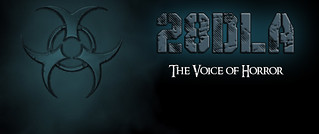
Heart of Darkness a film about colonial adventures set in the 19th century explores several themes including cultural African myths, the potential for madness in stressful environments, colonial pursuits in the African continent, and the Jungian psychological concept known as the shadow. Many other themes unfold within Heart of Darkness but writer and novelist Joseph Conrad's main focus is to tell an entertaining tale of how the psyche, under duress, can twist a person’s perceptions to such an extent as to cause insanity. Director Nicolas Roeg uses various techniques to clue the viewer in to this fact through central character Marlow (Tim Roth), a sea captain and ivory trader who is entering Kurtz's (John Malkovich) lair of madness near the end of the film. In order to enhance the theme of Africa's ability to turn some characters against themselves, character Kurtz is shown behaving in bizarre ways as Marlow finally reaches his final port of call in Africa's heart of darkness.
On the surface the story and plot of Heart of Darkness begins simply with Marlow, the recruit of a shipping company, making his way to Africa for a load of ivory, but on another level Marlow begins to question his own sanity as he experiences the mysteries of the African continent. The characterization of Marlow as an inquisitive, bold explorer shifts during the story as he travels up the Congo River in search of wealth. Taking part in new dangerous landscapes, hostage takings, and ambushes, from the locals and cohorts of Kurtz, the challenges the character Marlow changes his outlook upon himself and his mission.
In the film Marlow appears to Africanize during his journey. After one particular battle, that leaves his African companion Mfumu (Isaach De Bankole) dead, Marlow uses Mfumu's blood to paint his own face in a death mask similar to the hunters who pursue him and hamper his journey. As well, Marlow, in the same scene takes off his shoes and goes barefoot, similar to the African tribes in the picture. Also, Marlow's entire demeanour changes to a more primal state as he stares blankly into the forest, especially in the final scenes of the feature. Actor Tim Roth portrays Marlow with an understatement that is the mark of true, quality acting Roth's performance may make viewers question whether this sea captain is himself "going native," or losing his hold on sanity.
Director Roeg hints at the greed and brutality of colonialism, along with the theme of insanity throughout Heart of Darkness with the use of symbolism and character interaction. In the Free State of the Congo, during an opening sequence, an elephant can be seen in its final death throes as the animal's tusks have likely already been taken and this initial scene hints at the violence inherent in colonial ventures. Later, in the film several sequences involve Africans receiving poor treatment from white station managers in the form of beatings, imprisonment, or worse, death. The overt racist overtones of Conrad's writings come through in one specific scene where an African becomes scapegoated, by the colonials after a building, with provisions has been razed by fire. The beating takes places in retaliation for the sabotage of the warehouse and the implication is that the Africans have also sunk Marlow's ship, which is found by Marlow in the river. However, the likely suspect for the impairments to Marlow's mission is Gosse (James Fox,) (Meaning), the way station manager who wants to gain access to the deepest, most profitable ivory encampment at Marlow's expense (Meaning). The Africans become the target of Gosse after his mission fails and his inhuman treatment of the natives is a low point in the film.
Other plot lines and story developments revolve around Marlow battling cannibals in his journey up the Congo River to Kurtz's encampment; yet, the writing is continually building the myth of Kurtz as a genius in the ivory trade while developing an intensity in the film until Marlow and Kurtz finally confront each other. At the first colony, quarter master Harlequin (Morton Faldaas) states, when put to the test by Marlow that "There are rumours about him [Kurtz]." And "He [Kurtz] guards a mountain of ivory." (Heart) Harlequin then continues to state that Kurtz has lost touch and become foolish. During these early characterizations the story is foreshadowing an eventual showdown between antagonist and protagonist (Kurtz and Marlow).
The myth of Kurtz continues to build at the second station as manager Gosse states, "he is ill." Also, "[Kurtz] He is the greatest agent we have." And Marlow replies "You must be referring to Mr. Kurtz. I have heard no other name since I stood on African soil.“ (Heart)
When Marlow meets Kurtz, after traveling up the Congo this legend is more madman and savage than the way station managers describe; but, the first meeting seems anti-climactic as Marlow and Kurtz meet, and then come to an understanding instead of clashing on principles. Then, the story shifts in the final act and focuses on Kurtz's more primal urges of greed and brutality that rage out of control (Meaning). The setting of Kurtz's camp with human skulls, corpses, and primitive clothing hint at Kurtz's inability to manage his inner desires while transitioning the tone of the story into darker territory. Kurtz is a symbol of colonialism out of check and without constraints and Marlow the observer of such carnage. The outcome of pure primal desire is mostly death and destruction and the massive accumulation of wealth in ivory, which Kurtz surrounds himself in.
At the time in which this film is set Africa was known as the "Dark Continent," (Meaning) and the natives as apes and savages, to the colonials. Therefore, Conrad is subtly suggesting that Kurtz has fallen under the dark spell of Africa and lost his Europeanisms. Kurtz is essentially lost to the wilderness. Thus, Marlow's job is twofold; to retrieve the ivory from the central station and to relief, apprehend, or deal with Kurtz's character in any way that will reduce possible embarrassment to the shipping company (Meaning).
Clearly insane and possibly diseased Kurtz in his tattered clothing and rambling, speeches are in stark contrast to the previous managers, at the other way stations who maintain the European trappings of their previous home lives and distance themselves from African culture. Possibly, in an attempt by director Roeg or writer Conrad, the different dress, lifestyle and mannerisms between the inner way station captains and Kurtz show the two differing sides of colonialism. One side of colonialism involves the accumulation and display of wealth while a darker side, a more primitive side, being shown by Kurtz's character, involves the destruction of ancient civilizations for wealth and the loss of inner discipline. Kurtz represents the aspect of colonialism that many would prefer not to see.
During the climax or anti-climax, several character interactions between Marlow and Kurtz, the death of this central character, Kurtz and subsequent denouement of the story which includes Kurtz's wife (Candace Daly). Returning to the European setting Marlow addresses Kurtz's wife in the final scene and lies about Kurtz's final words. As Kurtz was dying he states, "The horror, the horror." But Marlow states that Kurtz's last words were, "Your name," (Heart).
In an attempt to protect the wife of Kurtz and her view of Europe and Kurtz's colonial work, Marlow gently misdirects her perspective in an attempt to keep her view of Kurtz in a positive, innocent light while allowing her to maintain her naiveté. The naiveté of women in "Heart of Darkness," who are given a very small role in the film is a running theme in Conrad's literary work. Often representing home life or superficial concerns women are only a symbol and a display of a man's success during the 18th century (Meaning). In the final shots of the film Roeg focuses the viewer's attention on the luxury of this young wife and her home. However, Kurtz's wife is not independent of the exploits of African territory as women in the 18th century, including Kurtz's wife play a complicit and passive role by enjoying the spoils of colonialism from Kurtz and the other European colonialists.
Other sub plots and African myths are given attention in Heart of Darkness and frame the setting of the film while explaining character motivations. Cannibalism is given reference to, in the film "Heart of Darkness," while Marlow drives his boat up the Congo. Marlow states "There are cannibals in that jungle (Heart)."
Within the 18th century instances of native Africans eating human flesh was common and the inclusion of this myth and cultural identity in Heart of Darkness hints at a
clash of culture between Europe and Africa and the concept of primitism (O'Farrell). Primitive, which is how the African culture, at the time was seen allows for the Europeans, in the story to dehumanize the Africans while exploiting their territory for resources and wealth. As well, the theme of exploitation is what drives the film and Marlow onwards towards Kurtz's encampment. At the final way station the many skulls and corpses hint at the possibility of cannibalism at the camp and the disregard for certain European taboos while heightening the darkness and brutality of Kurtz's character.
Finally, a theme, which relates to Carl Jung's psychological concept known as the shadow can be seen working in several of the characters within the film, but especially central characters Kurtz and Marlow. The shadow is an unconscious force, in the psyche that hides and represses all those feeling or motivations that are too much of a burden for the consciousness to bear (Fitz-Randolph). If these darker more primitive, basal needs and energies are overly repressed then they are manifested in inappropriate ways. Kurtz represses and denies his own shadow and in turn the Africans in the villages and communities, near his encampment suffer the consequences of his shadow's energy. Notice when Kurtz interacts with Marlow that there is no reference to his involvement in genocide or African atrocities despite the mountain of evidence, including African corpses at his encampment. In addition, Marlow who is more aware of his darker desires and therefore more capable of keeping them in check can see the shadow working within Kurtz. This madman casually kills animals without cause, kidnaps and indoctrinates children into murderers, and withholds the company's shipment of ivory. Kurtz cannot see his own inner shadow at work, but both Marlow and the viewer can.
Heart of Darkness written by Joseph Conrad, with a visual translation from director Nicolas Roeg delves into themes of colonialism, in the 18th century while displaying an entertaining tale of exploitation and the possibility of insanity in man under stress. The settings, characterizations, and acting help to create for an interesting, believable story as the films touches on relevant issues of madness and a life without constraint, or rules. Only briefly showing the African perspective within Heart of Darkness the film is about Europeans for Europeans. As well, over a hundred years old Heart of Darkness touches on themes that are relevant today and the film offers a complex, timeless tale of life and work in the deepest jungles of the African Congo.


 Saturday, February 28, 2009
Saturday, February 28, 2009
 Michael Allen
Michael Allen


 Posted in:
Posted in: 


2 comments:
great post, thanks for the info.
Thanks for this I had to update this C- paper with all the corrections from my teacher.
-Mike
Post a Comment